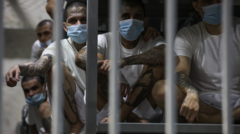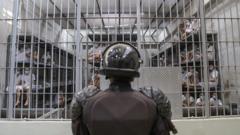With unlawful crossings significantly down, Mexico and Central American countries are on edge as President-elect Trump hints at embarking on a large-scale deportation initiative. Advocates warn of dire implications for migrants seeking refuge.
Tensions Rise as U.S.-Mexico Migration Policy Faces Uncertainty Under Trump Administration

Tensions Rise as U.S.-Mexico Migration Policy Faces Uncertainty Under Trump Administration
The drastic decline in unlawful crossings at the U.S.-Mexico border raises questions as Central American nations brace for potential mass deportations from the incoming Trump administration.
As the clock ticks down to Donald J. Trump's inauguration, the debate around U.S.-Mexico migration policy is intensifying. While it's reported that unlawful entries into the U.S. have notably declined over the past year, the prospect of mass deportations looms ominously over Central America and Mexico.
“We are preparing for dark times ahead,” expresses Irineo Mujica, the Mexico director for People Without Borders, an advocacy organization facing the potentially catastrophic effects of proposed policy changes under the Trump administration. “With current rhetoric, the migrant community feels it is being targeted for expulsion and possible destruction.”
What does the U.S.-Mexico border landscape look like now? Despite Trump's claims of an "invasion," the facts on the ground tell a more complex story.
A close look provides answers to pressing questions: What adaptations have been implemented by the U.S. and Mexico to reduce border crossings? How are migrants currently faring while waiting in Mexico? What strategies is Mexico deploying to prepare for an influx of deportations? Are there new variables influencing migration patterns in the region?
As the situation unfolds, uncertainty pervades the conversation surrounding migration policy, challenging both the migrants seeking better lives and the governments that must navigate the consequential policy landscape.






















